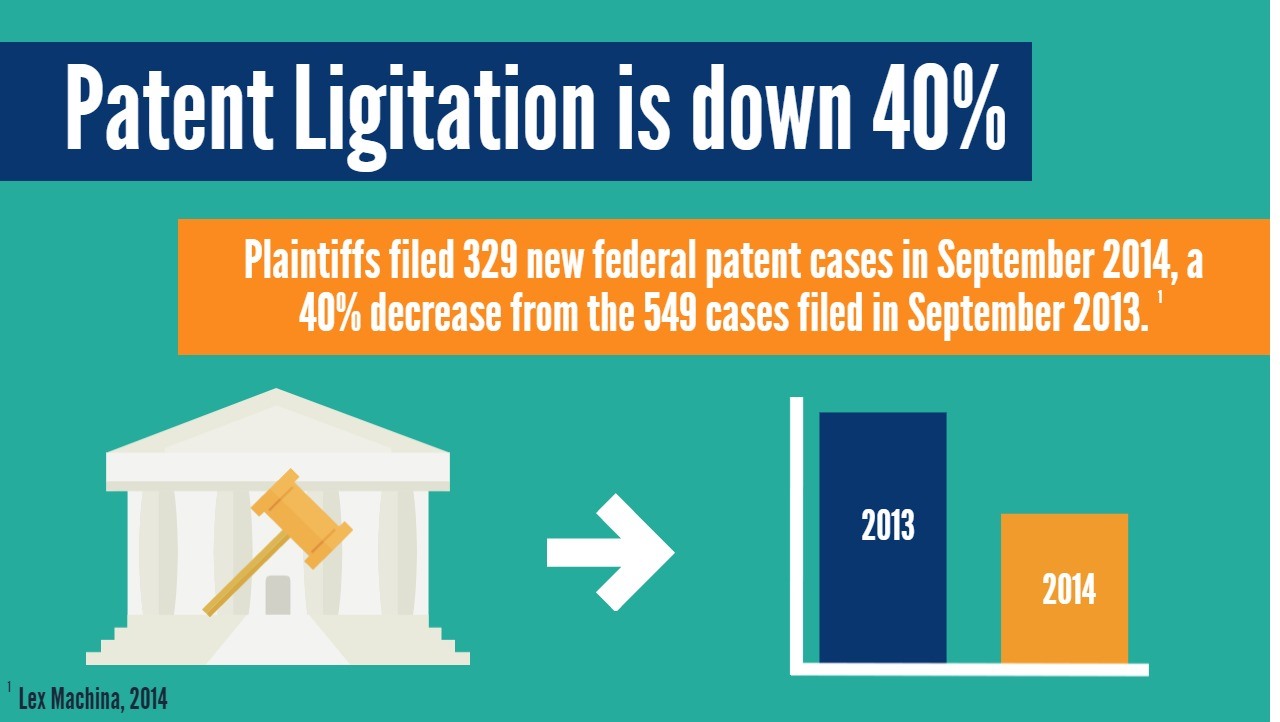Innovation Alliance Blog Post: Patent Reform: A solution in search of a problem
Over the past week, there have been a number of mentions in the media of the need for patent reform – even President Obama weighed in and said that dealing with litigation from so-called patent trolls is one of the “biggest problems” the administration is targeting.
At the same time there has been an increasing recognition, with data to back it up, that there is no “problem” that needs to be solved.
For example, last week, Lex Machina, a leading patent litigation research firm, published findings stating that patent litigation is down 40% from this time last year. The report’s author further stated that: “I think the need for legislative reform is a lot less right now than it was a year ago and it probably makes sense to wait a bit and see how these cases play out and what the new dynamic looks like before we try to rewrite the rules.”
And just today, The Atlantic published a poll of Silicon Valley “executives, innovators, and thinkers” that among others things noted that: “The Need for Patent Reform” ranked 6th out of 8 barriers to innovation in the United States with only 8% picking it. Barriers to innovation that polled above it were Government regulation/bureaucracy (20%), Immigration policies (16%), Education (14%) and finally Talent shortage and Lack of diversity among tech executives both coming in at 10%. In fact, the only barrier that polled lower than patent reform was Lack of investment – no shortage there.
For a little perspective on this issue, below are two charts of our own.
- The first chart shows patent litigation rates from 1790-1990, which demonstrates that litigation rates have been basically unchanged for the past 100 years.
- The second chart shows filed cases as a percent of all granted patents for the past 20+ years, which highlights that it is also unchanged – hovering at about 2%.
The data is clear. Patent reform is a solution in search of a problem.



